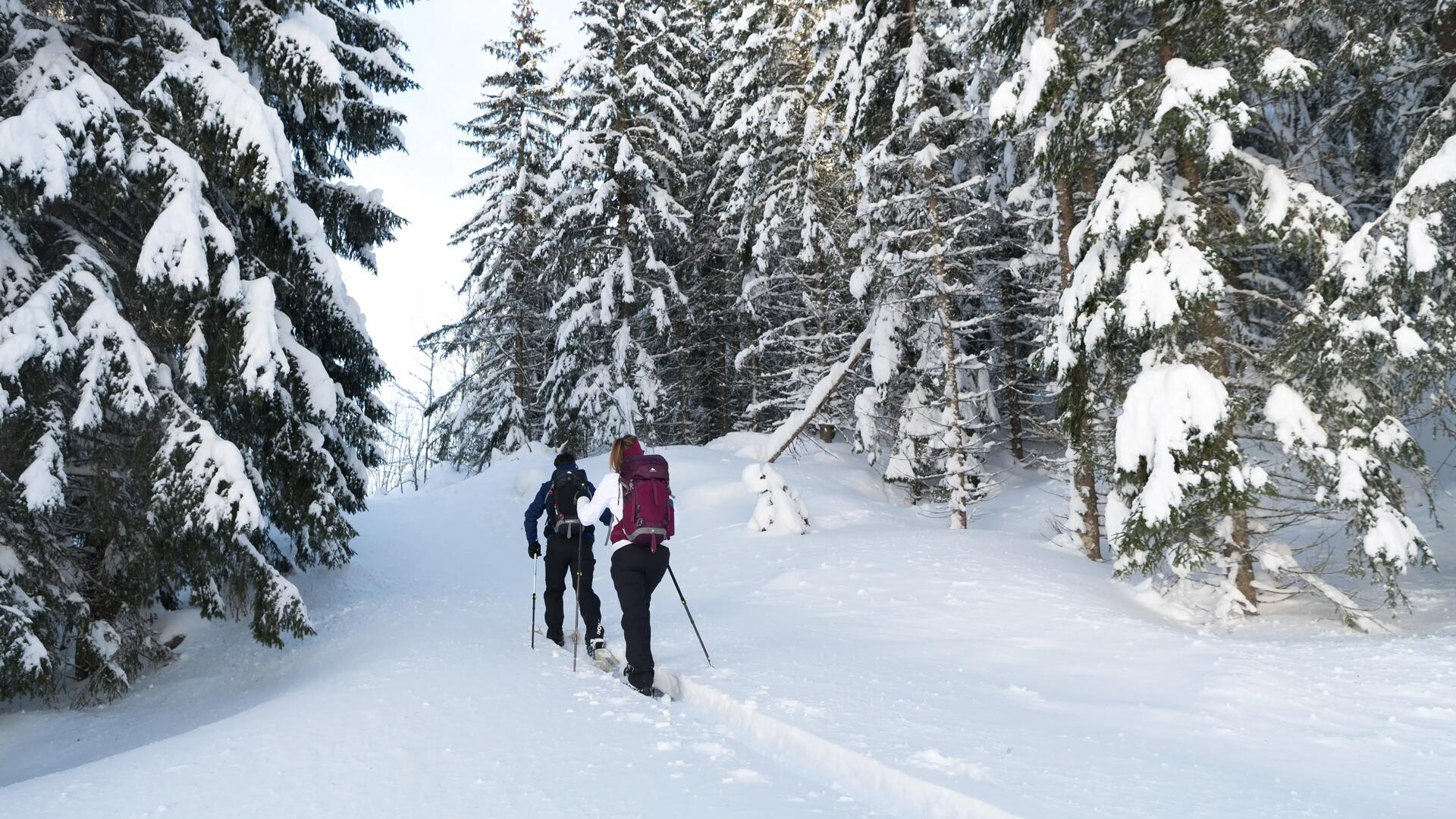Where can you practise snowshoeing-ski?
Snowshoeing-ski makes it possible to explore Nordic landscapes differently, especially when leaving behind cross-country ski trails.
Ideally it is practised in virgin spaces, such as plateaus, woods, snowy valleys, where the snow is fresh.
Depending on your physical fitness, your experience, your familiarity with skiing, you can adapt your routes, with varying distances and elevations. But you can't venture anywhere you please!
snowshoeing-ski is designed to be practised in areas with gradients of less than 15%, it is not suitable for the elevations of alpine or ski touring pistes, because the gradients are much too steep.
It is important to prepare well for your trip. The perfect way is to locate the route, make sure that the ground is suitable and passable, estimate the duration of your hike and of course consult the weather forecast.
If you are a beginner, it's better not to stray too far from the pistes.
Snow, a source both of pleasure and danger, is a very changeable element, so be careful not to venture out anywhere you please (slopes that are too sleep and where there is a risk of avalanches).
If you want to go further then it’s best to arrange a mountain guide to accompany you so you can enjoy these snowy expanses with piece of mind.



